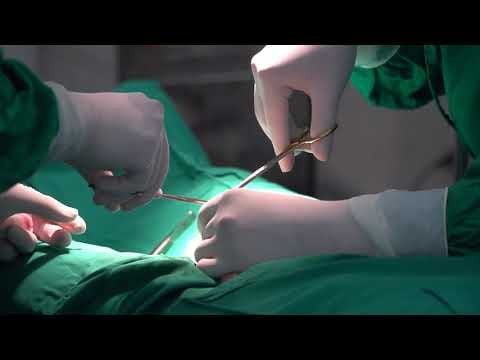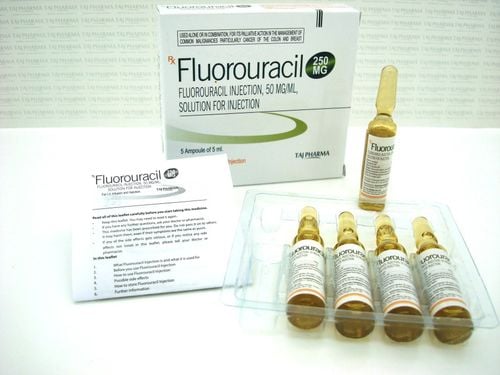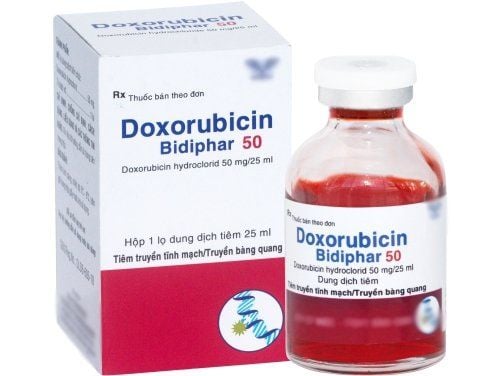This is an automatically translated article.
Breast cancer is a leading cause of death in women. Early detection of breast cancer in its early stages, such as stages 1 and 2, contributes to a good prognosis for treatment and long-term survival.1. What is early breast cancer?
Early breast cancers are malignant breast tumors that are limited to the breast tissue and can invade lymph nodes but have not invaded much of the surrounding organs. The prognosis for these stages of breast cancer is much better than for the later stages.
The most common type of breast cancer at an early stage is ductal carcinoma in situ (DCIS) that originates from cells in the milk ducts.
Stage 0 cancer is called "carcinoma in situ". Carcinoma means cancer and "In situ" means "at the original site". The three types of “carcinoma in situ” of breast tissue are: DCIS - Ductal carcinoma in situ LCIS - Lobular carcinoma in situ and Paget's disease of the nipple
Breast cancer stage 1 and 2 is invasive breast cancer located in the breast. The cancer may or may not have spread to the lymph nodes in the breast or armpit. In some cases, cancer cells may have spread beyond the breast and armpit area but cannot be detected. The earlier breast cancer is diagnosed and treated, the better the chance of survival.

2. Types of breast cancer stage 1 & 2
The most common types of invasive breast cancer are named after the location where the cells are cancerous. Types of early breast cancer include:
Invasive ductal carcinoma (IDC) - IDCs start in the milk ducts and account for 80% of all breast cancers. Invasive lobule carcinoma (ILC) - ILCs begin in the lobules and account for 10% of breast cancers. There are also other less common forms of invasive breast cancer, such as inflammatory breast cancer and Paget's disease of the nipple.
Trắc nghiệm: Những lầm tưởng và sự thật về ung thư vú
Ung thư vú có tỷ lệ tử vong cao nhất ở nữ giới khiến họ rất lo sợ bản thân mắc phải căn bệnh này. Tuy nhiên, không ít chị em có những hiểu biết thái quá về ung thư vú. Thử sức cùng bài trắc nghiệm sau sẽ giúp bạn loại bỏ được những nghi ngờ không đúng về căn bệnh này.
Bài dịch từ: webmd.com
3. Breast cancer stage 1
In stage 1 breast cancer, the cancer is obvious, but the tumor is limited to the area where the first abnormal cells started to develop. If breast cancer has been detected at this stage, it can be treated very effectively.
Stage 1 can be divided into Stage 1A and Stage 1B. The difference is determined by the size of the tumor and the lymph nodes that have evidence of cancer cells.
Stage 1A breast cancer means: The tumor is smaller or roughly the size of a peanut (2 cm or smaller) AND has not spread to the lymph nodes. Stage 1B breast cancer includes: Lymph nodes with evidence of cancer with small clusters of cells between 0.2 mm and 2.0 mm in size, roughly the size of a pinhead sharp to approximately one grain of rice. AND no actual tumor was found in the breast. OR the tumor is less than 2cm in size or smaller (equivalent to the size of a peanut).
4. Breast cancer stage 2
Stage 2 means that the breast cancer is growing, but it is still confined to the breast or the growth has only extended to nearby lymph nodes. This stage is divided into groups: Stage 2A and Stage 2B. The difference is determined by the size of the tumor and whether the breast cancer has spread to the lymph nodes.
Stage IIA breast cancer includes:
No actual tumor involving cancer cells and fewer than four axillary lymph nodes with cancer cells. OR the tumor is smaller than 2 cm and fewer than four axillary lymph nodes have cancer cells. OR the tumor is 2 to 5 cm in size and has not spread to the lymph nodes. Stage IIB breast cancer includes:
The tumor is 2 to 5 cm in size and has spread to fewer than 4 axillary lymph nodes. OR the tumor is larger than 5cm, but has not spread to any lymph nodes in the armpit.

5. Treatment of early breast cancer
The aim of early breast cancer treatment is to remove the breast cancer and any cancer cells that may remain in the breast, armpit or other parts of the body but cannot be detected.
Treatment for early breast cancer can vary from person to person. The stage (extent) of breast cancer is an important factor when making treatment decisions. However, other factors may also be important, such as the location of the cancer in the breast, the type of cancer, and whether the cancer is hormone receptor positive, HER2 positive, or triple negative. Your doctor will also consider your age, general health, and preferences.
Treatment for early breast cancer may include:
Breast surgery Radiation Chemotherapy Endocrine therapy Targeted therapies 5.1 Treatment for stage 1 breast cancer
When breast cancer is detected early and in the localized stage, the relative 5-year survival rate is 100%. Stage 1 breast cancer is very treatable, but requires immediate treatment, usually with surgery and often radiation therapy, or a combination of both. Alternatively, you may consider hormone therapy, depending on the type of cancer cells found and additional risk factors. Chemotherapy is not usually needed for the early stages of cancer such as stage 1 cancer.
Surgery is the mainstay of treatment for stage I breast cancer. These cancers can be treated with surgery. Breast-conserving surgery (sometimes called lumpectomy or partial mastectomy) or mastectomy. Nearby lymph nodes will also need to be examined, either with a sentinel lymph node biopsy (SLNB) or axillary lymph node dissection (ALND).
In some cases, breast reconstruction can be done at the same time as surgery to remove the cancer. But if the patient needs radiation therapy after surgery, it is better to wait until radiation therapy is complete before breast reconstruction
If conservative surgery is performed, radiation therapy is usually given after surgery to reduce the risk of breast reconstruction. cancer recurrence in the breast and also to help prolong survival.
In some special cases, women aged 70 years and older may be considered for conservative surgery without radiation therapy if all of the following are present:
The tumor is 2 cm across (less than 1 inches) or less and it has been completely excised. None of the removed lymph nodes contained cancer. Cancer is ER-positive or PR-positive, and hormone therapy is performed.

Radiation therapy in this group of women still reduces the risk of the cancer coming back, but it has not been shown to help them live longer.
If a mastectomy is performed, radiation therapy is less likely to be needed, but it may be done depending on the specific cancer. Patients should discuss with their doctor if radiation therapy is needed.
For patients with hormone receptor-positive breast cancer (ER-positive or PR-positive), most doctors will recommend hormone therapy (tamoxifen or an aromatase inhibitor, or an other drugs) as an adjuvant (additional) treatment, no matter how small the tumor. Women with tumors larger than 0.5 cm (about 1⁄4 inches) may be more likely to improve treatment with use. Hormone therapy is usually done for at least 5 years.
5.2. Stage 2 breast cancer treatment
Stage II breast cancer is also treated with breast-conserving surgery or mastectomy. Nearby lymph nodes will also be examined, either with a sentinel lymph node biopsy (SLNB) or axillary lymph node dissection (ALND).
Patients with conservative surgery will be treated with radiation therapy after surgery. Women who have a mastectomy are often treated with radiation if cancer is found in the lymph nodes. Some patients whose sentinel lymph node biopsy shows cancer in a few lymph nodes may not need to have the rest of the lymph node removed for further examination. In these patients, radiation therapy may be discussed as a treatment option after mastectomy.
If the patient is initially diagnosed with stage II breast cancer and has received treatment such as chemotherapy or hormone therapy prior to surgery, then radiation therapy may be recommended if cancer is detected in the lymph nodes at the time of mastectomy. A doctor who specializes in radiation therapy can review the patient's case to discuss whether radiation would be helpful. If chemotherapy is also needed after surgery, radiation therapy will be delayed until chemotherapy is complete.
In some cases, breast reconstruction can be done during surgery to remove the cancer. But if you'll need radiation therapy after surgery, it's better to wait for your reconstruction until the radiation is complete.
Systemic therapy is recommended for some women with stage II breast cancer. Some systemic therapies are given before surgery (neoadjuvant therapy), and others are given after surgery (adjuvant therapy). Neoadjuvant treatments are often a good option for women with large tumours, as they can shrink the tumor before surgery, making it possible to convert to conservative surgery. But this did not improve survival more than with post-operative treatments. In some cases, systemic therapy will be started before surgery and then continued after surgery.
At Vinmec International General Hospital, there is a Breast Cancer Screening Package to help detect breast cancer early even when there are no symptoms.
Breast cancer screening package at Vinmec for the following subjects:
Female customers, over 40 years old. Customers wishing to be able to screen for breast cancer Customers are at high risk of cancer – especially customers with a family history of breast cancer. Women of reproductive age, perimenopause and menopause. Women who are having symptoms of breast cancer such as: pain in the breast, lump in the breast, etc.
Please dial HOTLINE for more information or register for an appointment HERE. Download MyVinmec app to make appointments faster and to manage your bookings easily.
References: nbcf.org.au, cancer.org
MORE
Treatment of metastatic breast cancer Treatment options for breast cancer by stage Breast cancer classification













